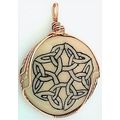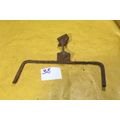Durness, Sutherland, Highland - Post Office, supermarket - postcard c.1994
- Condition : Used
- Dispatch : 2 Days
- Brand : None
- ID# : 191921219
- Quantity : 1 item
- Views : 259
- Location : United Kingdom

- Seller : justthebook (+1695)
- Barcode : None
- Start : Tue 05 May 2020 04:57:23 (EDT)
- Close : Run Until Sold
- Remain : Run Until Sold
Checks/Cheques
 for 1 item(s) edit
for 1 item(s) edit
Shipping Calculator
More Listings from This Seller view all
Seller's Description
- Postcard
- Picture / Image: British Post Offices - Durness, Sutherland [Highland region]
- Publisher: David Shaw - British Post Office No. 33
- Postally used: no
- Stamp: n/a
- Postmark(s): n/a
- Sent to: n/a
- Notes / condition:
Please ask if you need any other information and I will do the best I can to answer.
Image may be low res for illustrative purposes - if you need a higher definition image then please contact me and I may be able to send one. No cards have been trimmed (unless stated).
------------------------------------------------
Postage & Packing:
Postage and packing charge should be showing for your location (contact if not sure).
No additional charges for more than one postcard. You can buy as many postcards from me as you like and you will just pay the fee above once. Please wait for combined invoice. (If buying postcards with other things such as books, please contact or wait for invoice before paying).
Payment Methods:
UK - PayPal, Cheque (from UK bank) or postal order
Outside UK: PayPal ONLY (unless otherwise stated) please. NO non-UK currency checks or money orders (sorry).
NOTE: All postcards are sent in brand new stiffened envelopes which I have bought for the task. These are specially made to protect postcards and you may be able to re-use them. In addition there are other costs to sending so the above charge is not just for the stamp!
I will give a full refund if you are not fully satisfied with the postcard.
----------------------------------------------
Text from the free encyclopedia WIKIPEDIA may appear below to give a little background information (internal links may not work) :
*************
Durness (Scottish Gaelic: Diùranais) is a village and civil parish in the north-west Highlands of Scotland. It lies on the north coast of the country in the traditional county of Sutherland, around 120 miles (190 km) north of Inverness. The area is remote, and the parish is huge and sparsely populated, covering an area from east of Loch Eriboll to Cape Wrath, the most north-westerly point of the Scottish mainland.[2]
The population is dispersed and includes a number of townships including Kempie, Eriboll, Laid, Rispond, Sangobeg, Leirinmore, Smoo, Sangomore, Durine, Balnakeil and Keoldale.
The area has been inhabited since stone age times and there are many places of historic interest. To the south of the village at the former township of Cnocbreac can be seen the remains of two parallel turf dykes of Neolithic origin, the purpose of which is unknown[3] Durness was formerly a part of the bishopric of Caithness and the old house at Balnakeil was originally the bishop's summer residence. The church at Balnakeil dates back to the Culdean monks but the existing ruined church is said to have been built by the monks from Dornoch Cathedral in the 13th century. On Faraid Head is Seannachaisteal, presumably a broch, but it is now completely enveloped in sand and no dig has ever been carried out to see what it was and from which time in history. In May 1991, the body of a young Viking boy was discovered exposed by the erosion of the sand dunes at Faraid Head.[4] At Sangobeg beach, the body of a Pictish child was discovered in 2000.
At Ceannabeinne lies "Clach a Breitheanas" or the Judgement Stone. This was said to be where judgement was meted out to malefactors and those found guilty were thrown over the cliff to their doom below.
The parish of Durness was for centuries a part of Dùthaich MhicAoidh, the land of the Clan Mackay, who held their title to the land extending from Melvich in the east to Kylesku in the west. The area is also important to the Clan Morrison, who live with their traditional allies, the Clan Mackay. "Many sanguinary battles, still recounted by tradition , were fought between the Mcleods and Macaulays on one side and the Morisons on the other. At last the Morisons were forced to leave Lewis and take refuge with that part of their clan which was settled in Duirness and Edderachyllius, Sutherland, where still, in 1793, the natives were all, except a few, of the three names of Mac Leay, Morison or Mcleod."[5]
Loch Eriboll was used by the battle fleet of King Haakon of Norway on its way south to the disastrous Battle of Largs in 1266. During the Second World War, the battle cruiser "Jamaica" sustained an outbreak of measles on board and was quarantined in the loch for months. At cessation of hostilities in 1945 it saw the surrender of some 30 German U-boats. During the Second World War, the RAF built a Chain Home radar station at Sango near Durness. After the war there was also a ROTOR radar station at Faraid Head near Balnakeil, part of which is used by the modern military range and the accommodation area is used for various crafts.[6]
In the early 19th century the population of the parish was around 1,100,[7] spread widely throughout scattered small townships. The population today is much diminished with the whole of the Durness area suffering greatly from the Highland Clearances, the first in 1809 and thereafter throughout the greater part of the 19th century until the Crofting Act of the 1886 finally gave crofters a measure of security of tenure. The Durness Riots of 1841 were caused by a clearance when the women of Ceannabeinne township defied the Sheriff Officer sent to deliver the summons of eviction and subsequent disorder occurred at the village inn in Durness when a second attempt was made, causing the officers to be again run out of town.[8]
Geography
The main sources of employment in the village are crofting and tourism. It is the largest village in the northwestern corner of Scotland, has a population of around 400, and is on the A838 road. It is located on the north coast between the towns of Thurso 72 miles (116 km) to the east and Ullapool 68 miles (109 km) to the south. This area is notable for being the most sparsely populated region in Western Europe.[citation needed] Until some 50 years ago, Durness was a predominantly Gaelic speaking area.
Listing Information
| Listing Type | Gallery Listing |
| Listing ID# | 191921219 |
| Start Time | Tue 05 May 2020 04:57:23 (EDT) |
| Close Time | Run Until Sold |
| Starting Bid | Fixed Price (no bidding) |
| Item Condition | Used |
| Bids | 0 |
| Views | 259 |
| Dispatch Time | 2 Days |
| Quantity | 1 |
| Location | United Kingdom |
| Auto Extend | No |



















